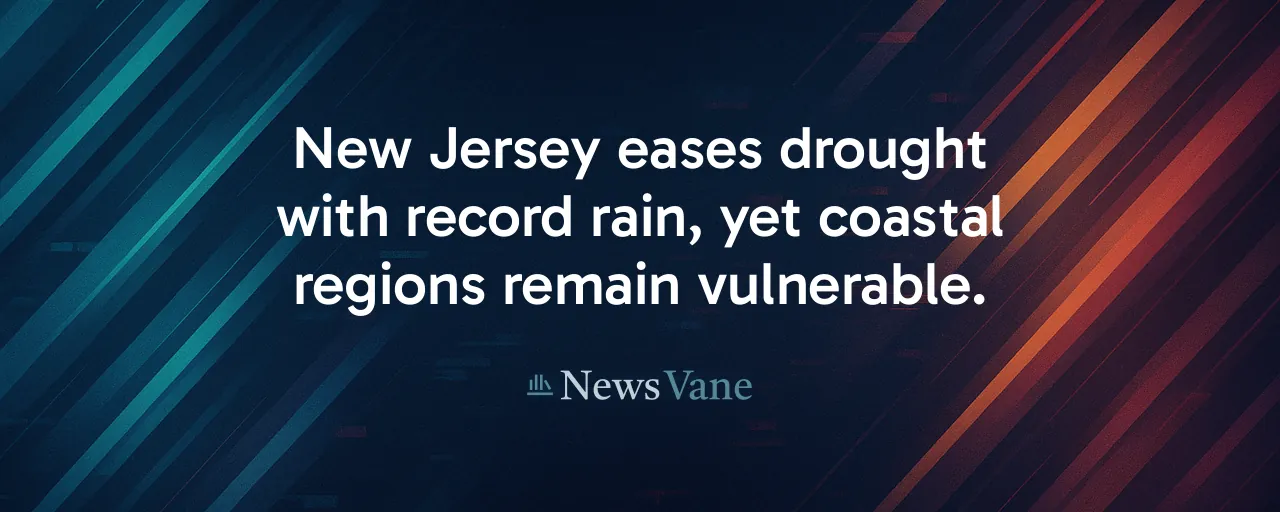A Partial Victory Over Drought
New Jersey's long dry spell is easing. On June 11, 2025, the state's Department of Environmental Protection lifted a drought warning for most regions, thanks to a record-wet May that poured over seven inches of rain. Reservoirs are filling, and streams are flowing again. But the Coastal South, covering Atlantic, Cape May, and parts of five other counties, remains on drought watch. This split tells a bigger story about water, weather, and how we adapt.
Last year's drought hit hard, with the driest fall in state history and October 2024 clocking in as the driest month ever. By November, officials were urging everyone to conserve. Spring 2025 brought relief, especially in the north, where groundwater and streams bounced back. The Coastal South, though, is lagging. Its sandy soils and heavy water demands from tourism and farming slow aquifer recharge, leaving the region vulnerable.
Climate's Grip on Water Supplies
This drought didn't come out of nowhere. Climate change is rewriting the rules, pushing weather to extremes. Scientists say warming intensifies the water cycle, leading to heavier storms and longer dry stretches. In New Jersey, this means reservoirs fill fast during wet months, only to drain during rainless ones. The state's 2024 Water Supply Plan flags these swings, noting that coastal aquifers face extra pressure from rising seas and saltwater intrusion.
Other regions feel it too. California's cities now plan for hotter droughts, while the USDA tests drip irrigation to save aquifers. New Jersey's response blends urgency and strategy: linking water systems across regions, cleaning up PFAS in drinking water, and promoting conservation. These steps require teamwork among towns, utilities, and state leaders, but tight budgets and competing priorities make it a tough balancing act.
Balancing Priorities in Water Policy
Managing water sparks lively debates. Some leaders advocate for bold projects, like new reservoirs or desalination plants, funded by user fees or private investors. They argue these deliver reliable supplies. Others prioritize fairness, seeking federal funds for lead-pipe replacements or green infrastructure, like rain gardens that slash runoff by 70 percent. Everyone agrees the nation's $434 billion water investment gap demands tough calls.
New Jersey's Department of Environmental Protection is navigating this terrain. It's urging Coastal South residents to keep conserving while tightening utility oversight. Elsewhere, Massachusetts is eyeing statewide drought rules to replace uneven local ones, and California's cracking down on overpumped groundwater. These efforts point to a shared goal: clear, science-based policies to secure water for all.
People and Innovation at Work
Communities are stepping up. Outreach campaigns, from online tips to school programs, have cut water use by 10 to 20 percent in some U.S. cities. New Jersey leaned on flyers and videos during the drought, and it paid off. Research shows that when people grasp risks, like climate-driven shortages, they act, regardless of their politics. In Detroit, affordable billing pairs with conservation audits; in New Orleans, residents tend rain gardens. These efforts prove small actions add up.
Technology is a game-changer too. Smart meters spot leaks fast, saving 20 percent of lost water. New filtration systems tackle PFAS with less energy, and some wastewater plants now produce power. New Jersey's eyeing aquifer recharge, though coastal soils pose challenges. Blending human commitment with these tools stretches water supplies further than either could alone.
Looking Ahead for New Jersey
The state's recovery is a win, but the Coastal South's watch status signals ongoing risks. Climate change means droughts may strike harder and linger longer. The Department of Environmental Protection is staying vigilant, tracking streamflows, reservoirs, and groundwater while pushing towns to strengthen local rules. The 2024 Water Supply Plan lays out a roadmap: recycled water, regional pipelines, and smarter conservation.
Residents play a big role. Fixing leaks, cutting shower time, and using rain barrels make a difference. Communities that embrace these habits, backed by clear information, lighten the load on aquifers. New Jersey's experience highlights the need for practical systems and shared resolve to handle whatever weather comes next.
Water touches every part of life, from daily routines to summer getaways. New Jersey's path forward shows that securing it takes ingenuity, effort, and a collective focus on balancing today's demands with tomorrow's needs.
